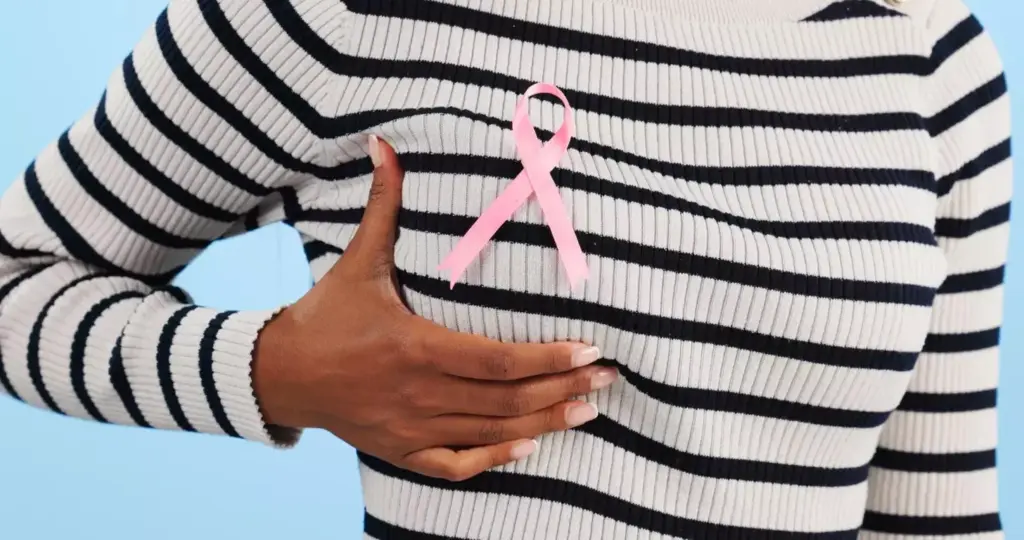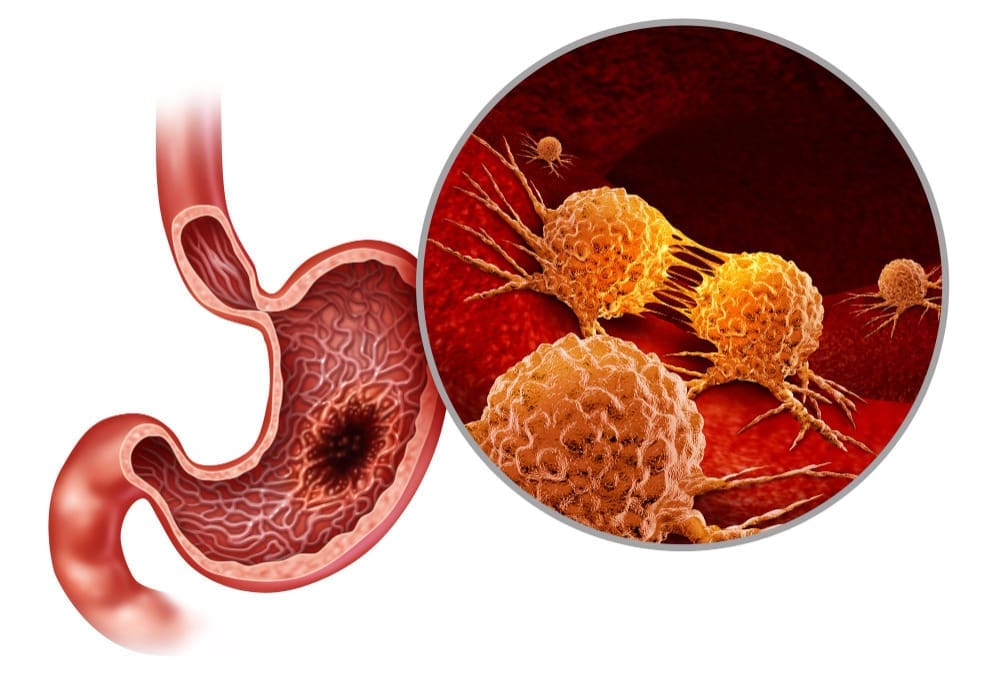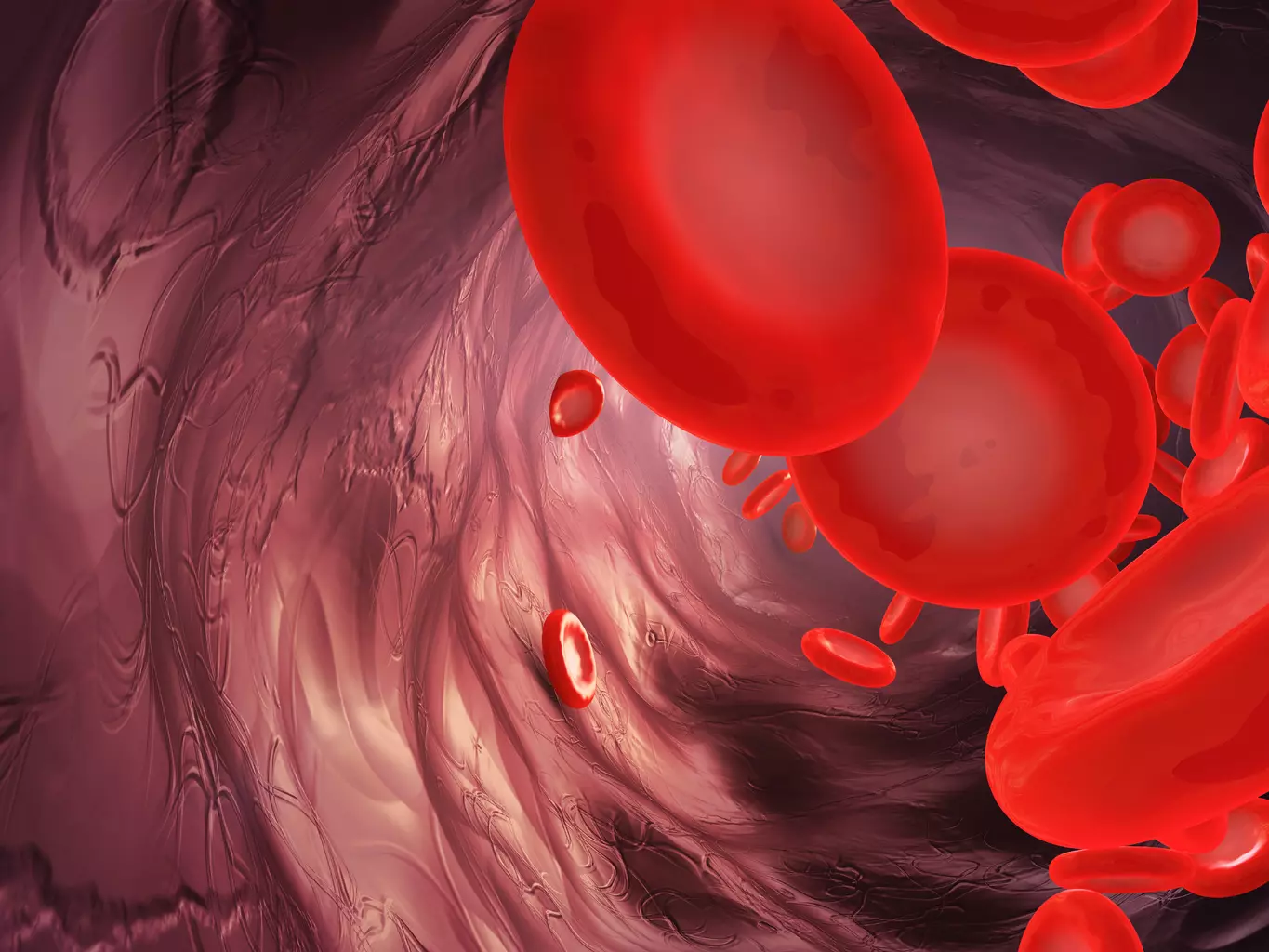Last Updated on November 26, 2025 by Bilal Hasdemir

Breast cancer is one of the most prevalent cancer types among women worldwide. Fortunately, advancements in medical treatments have significantly improved survival rates. Chemotherapy plays a crucial role in the treatment of breast cancer, offering hope to many patients.
At Liv Hospital, we understand the importance of personalized care and cutting-edge treatment regimens. Recent studies have shown the effectiveness of various chemotherapy regimens in treating breast cancer, including the use of anthracyclines and taxanes. In this article, we will explore 8 key drugs and regimens that are vital for navigating effective treatment options.
Key Takeaways
- Understanding the role of chemotherapy in breast cancer treatment.
- Overview of key chemotherapy drugs used for breast cancer.
- Importance of personalized care in chemotherapy regimens.
- Effectiveness of anthracyclines and taxanes in treating breast cancer.
- Exploring 8 key drugs and regimens for effective treatment.
Understanding Breast Cancer and the Role of Chemotherapy
As one of the most common cancers among women, breast cancer requires a comprehensive treatment approach, including chemotherapy. We will explore the prevalence and various types of breast cancer, and how chemotherapy is utilized as a treatment option.
Breast Cancer Prevalence and Types
Breast cancer is a significant health concern globally, with various types that require different treatment strategies. According to the American Cancer Society, breast cancer is categorized into several types based on the cancer’s characteristics and genetic makeup.
The most common types include:
- Invasive Ductal Carcinoma (IDC): The most common type, accounting for about 70-80% of breast cancer diagnoses.
- Invasive Lobular Carcinoma (ILC): Begins in the lobules and can spread to other parts of the body.
- Triple-Negative Breast Cancer (TNBC): A subtype that lacks estrogen receptors, progesterone receptors, and excess HER2 protein.
- HER2-Positive Breast Cancer: Characterized by an overexpression of the HER2 protein, which can promote cancer cell growth.
| Type of Breast Cancer | Description | Prevalence |
|---|---|---|
| Invasive Ductal Carcinoma (IDC) | Cancer that begins in the milk ducts and invades surrounding tissue. | 70-80% |
| Invasive Lobular Carcinoma (ILC) | Cancer that starts in the lobules and can spread. | 10% |
| Triple-Negative Breast Cancer (TNBC) | Lacks estrogen receptors, progesterone receptors, and excess HER2 protein. | 10-15% |
| HER2-Positive Breast Cancer | Overexpresses the HER2 protein, promoting cancer cell growth. | 20% |
When Chemotherapy Is Recommended
Chemotherapy is often recommended for patients with aggressive or advanced breast cancer. The decision to use chemotherapy depends on several factors, including the stage and characteristics of the cancer, as well as the patient’s overall health.
Factors influencing chemotherapy recommendation:
- Cancer stage: Chemotherapy is more likely to be recommended for cancers diagnosed at a later stage.
- Cancer type: Certain types, like TNBC, may require chemotherapy due to their aggressive nature.
- Patient’s health: Overall health and ability to tolerate chemotherapy side effects.
Understanding these factors helps in making informed decisions about breast cancer treatment. We work closely with patients to determine the most appropriate treatment plan, including when chemotherapy is recommended.
How CA Breast Chemotherapy Works in Fighting Cancer Cells
Chemotherapy is a cornerstone treatment for breast cancer, working by targeting rapidly dividing cancer cells. We use chemotherapy drugs to destroy cancer cells that the body can’t eliminate on its own. These drugs target cells that are dividing rapidly, a characteristic of most cancer cells.
Mechanism of Action
Chemotherapy drugs work through various mechanisms to fight cancer. Alkylating agents, for example, damage the DNA of cancer cells, making it impossible for them to reproduce. Anthracyclines, another class of chemotherapy drugs, intercalate DNA strands, thereby inhibiting the synthesis of DNA and RNA. This action prevents cancer cells from replicating and ultimately leads to cell death.
The mechanism of chemotherapy is not limited to killing cancer cells; it also affects other rapidly dividing cells in the body, such as hair follicles and the lining of the gut. This is why chemotherapy can cause side effects like hair loss and nausea.
Timing and Administration Methods
The timing and administration of chemotherapy depend on several factors, including the type and stage of breast cancer, as well as the patient’s overall health. Chemotherapy can be administered through various methods, including intravenous infusion, oral medication, and injections.
Intravenous chemotherapy is given directly into a vein, usually in the arm, and is often used for treatments like doxorubicin and cyclophosphamide. Oral chemotherapy, on the other hand, involves taking medication in pill or liquid form. The choice of administration method depends on the specific chemotherapy regimen and the patient’s condition.
Understanding the administration methods and the mechanism of action of chemotherapy helps patients prepare for their treatment and manage potential side effects. At our institution, we tailor chemotherapy regimens to each patient’s unique needs, ensuring the most effective treatment possible.
Anthracycline Drugs: Doxorubicin (Adriamycin)
Doxorubicin, commonly known by its brand name Adriamycin, is a powerful anthracycline antibiotic used in the treatment of breast cancer. We utilize doxorubicin as a key component in various chemotherapy regimens due to its effectiveness in killing cancer cells.
Mechanism of Action Against Breast Cancer
Doxorubicin works by intercalating DNA strands, thereby inhibiting the synthesis of DNA and RNA. This action prevents cancer cells from reproducing and ultimately leads to cell death. Additionally, doxorubicin inhibits topoisomerase II, an enzyme that cancer cells need to divide and grow.
The mechanism of doxorubicin is complex and multifaceted, making it a valuable tool in the fight against breast cancer. By understanding how doxorubicin works, we can better appreciate its role in breast cancer treatment protocols.
Dosing and Administration Protocol
The dosing and administration of doxorubicin are critical aspects of its use in chemotherapy. Typically, doxorubicin is administered intravenously, and the dosage is calculated based on the patient’s body surface area. The standard dose range is between 60 to 75 mg/m every 3 weeks, although this can vary depending on the specific regimen and patient factors.
To illustrate the dosing protocol, consider the following table:
| Regimen | Dose (mg/m) | Frequency |
|---|---|---|
| AC (Doxorubicin + Cyclophosphamide) | 60 | Every 3 weeks |
| CAF (Cyclophosphamide + Doxorubicin + Fluorouracil) | 50 | Every 3 weeks |
| Dose-dense AC | 60 | Every 2 weeks |
It’s essential to note that the dosing protocol may be adjusted based on patient response and tolerance. We closely monitor patients receiving doxorubicin to minimize potential side effects and maximize treatment efficacy.
By understanding the mechanism and dosing protocol of doxorubicin, we can better manage its use in breast cancer treatment, providing effective care for our patients.
Alkylating Agents: Cyclophosphamide (Cytoxan)
Cyclophosphamide, commonly known by its brand name Cytoxan, is a crucial alkylating agent in the fight against breast cancer. As part of a comprehensive chemotherapy regimen, cyclophosphamide plays a vital role in treating various stages of breast cancer.
Mechanism and Effectiveness in Breast Cancer
Cyclophosphamide works by damaging the DNA of cancer cells, thereby inhibiting their growth and proliferation. As an alkylating agent, it attaches an alkyl group to the DNA, causing cross-links between DNA strands. This action prevents cancer cells from replicating, ultimately leading to cell death. The effectiveness of cyclophosphamide in breast cancer treatment has been well-documented, particularly when used in combination with other chemotherapy drugs.
We often use cyclophosphamide in conjunction with other chemotherapy agents, such as doxorubicin, to enhance its effectiveness. For more information on how cyclophosphamide is used in treatment protocols, you can visit this resource for detailed insights.
Common Usage Patterns
Cyclophosphamide is commonly used in various breast cancer chemotherapy regimens. It is often part of the AC-T regimen, which includes anthracyclines (like doxorubicin), cyclophosphamide, and taxanes. The dosage and administration of cyclophosphamide can vary depending on the specific regimen and patient factors.
The table below summarizes key aspects of cyclophosphamide usage in breast cancer treatment:
| Regimen | Dose | Frequency | Common Combinations |
|---|---|---|---|
| AC-T | 500-600 mg/m² | Every 2-3 weeks | Doxorubicin, Paclitaxel |
| TC | 500-600 mg/m² | Every 3 weeks | Docetaxel |
In conclusion, cyclophosphamide remains a cornerstone in breast cancer chemotherapy, offering significant benefits when used appropriately. Its mechanism of action and versatility in various treatment regimens make it a valuable tool in the fight against breast cancer.
Taxanes: Docetaxel (Taxotere) and Paclitaxel (Taxol)
The taxane family, comprising docetaxel and paclitaxel, has become a cornerstone in breast cancer chemotherapy. These drugs work by stabilizing microtubules and inhibiting cell division, thus preventing the proliferation of cancer cells.
Docetaxel: Applications and Efficacy
Docetaxel is used in various breast cancer treatment regimens due to its efficacy. It is particularly effective in treating HER2-positive and triple-negative breast cancers.
Efficacy of Docetaxel:
- High response rates in both early and advanced stages of breast cancer
- Effective in combination with other chemotherapy agents
- Shown to improve survival rates when used in neoadjuvant and adjuvant settings
| Treatment Setting | Efficacy Metrics | Clinical Benefit |
|---|---|---|
| Neoadjuvant | Pathological complete response (pCR) | High pCR rates, indicating effective tumor reduction |
| Adjuvant | Disease-free survival (DFS) | Improves DFS, reducing recurrence risk |
| Metastatic | Overall response rate (ORR) | Provides significant tumor shrinkage and symptom palliation |
Paclitaxel: Weekly vs. Every-Three-Weeks Dosing
Paclitaxel is another taxane used in breast cancer treatment, with dosing schedules significantly impacting its efficacy and tolerability.
Dosing Schedules for Paclitaxel:
- Weekly dosing: Offers increased efficacy and reduced toxicity
- Every-three-weeks dosing: Traditional schedule, but may have higher toxicity
Research has shown that weekly paclitaxel can improve outcomes and reduce side effects compared to the every-three-weeks schedule, making it a preferred option for many patients.
Additional Chemotherapy Agents for Breast Cancer
The arsenal against breast cancer includes a range of chemotherapy drugs, each with its unique mechanism and application. While standard regimens are effective, additional agents like carboplatin and capecitabine play critical roles in specific scenarios.
Carboplatin for Triple-Negative and BRCA-Mutated Cancers
Carboplatin is a platinum-based chemotherapy drug that has shown significant efficacy in treating triple-negative breast cancer (TNBC) and cancers associated with BRCA mutations. Its mechanism involves damaging the DNA of cancer cells, thereby inhibiting their ability to reproduce.
Clinical trials have demonstrated that carboplatin can be particularly effective in TNBC, offering a viable alternative for patients who may not respond well to standard treatments. For instance, a study highlighted in the
“Journal of Clinical Oncology” noted that carboplatin achieved a significant pathological complete response in TNBC patients.
| Cancer Type | Carboplatin Efficacy | Standard Treatment Alternatives |
|---|---|---|
| Triple-Negative Breast Cancer | High | Anthracyclines, Taxanes |
| BRCA-Mutated Cancers | Moderate to High | PARP Inhibitors, Anthracyclines |
Capecitabine (Xeloda) for Metastatic Disease
Capecitabine, marketed as Xeloda, is an oral chemotherapy agent used primarily in the treatment of metastatic breast cancer. It works by being converted to 5-fluorouracil (5-FU) in the body, which then interferes with the DNA synthesis of cancer cells, inhibiting their growth.
Capecitabine is valued for its convenience as an oral medication and its efficacy in managing metastatic disease. It is often used in patients who have received previous chemotherapy regimens, offering a manageable side effect profile.
As we continue to navigate the complexities of breast cancer treatment, the role of additional chemotherapy agents like carboplatin and capecitabine becomes increasingly important. These drugs not only expand our treatment arsenal but also offer hope to patients with specific subtypes of breast cancer.
AC-T Regimen: Anthracycline-Cyclophosphamide-Taxane Protocol
The AC-T regimen, comprising anthracyclines, cyclophosphamide, and taxanes, is a cornerstone in breast cancer chemotherapy. This multi-drug protocol is designed to target cancer cells more effectively than single-agent treatments.
Components and Administration Schedule
The AC-T regimen typically consists of three main components:
- Anthracyclines (e.g., doxorubicin): These drugs work by intercalating DNA strands, thereby inhibiting the synthesis of DNA and RNA and inducing apoptosis in cancer cells.
- Cyclophosphamide: An alkylating agent that damages the DNA of cancer cells, preventing them from reproducing.
- Taxanes (e.g., docetaxel or paclitaxel): These drugs disrupt the normal function of microtubules, essential for cell division, thereby inhibiting cancer cell growth.
The administration schedule for the AC-T regimen can vary, but it typically involves:
- Administering anthracyclines and cyclophosphamide (AC) every 2-3 weeks for 4 cycles.
- Followed by taxanes (T) every 2-3 weeks for 4 cycles.
Effectiveness and Patient Selection
The AC-T regimen has been shown to be highly effective in treating various stages of breast cancer, particularly in patients with:
- High-risk disease characteristics
- Aggressive tumor biology
- Positive lymph node status
Patient selection for the AC-T regimen is based on several factors, including overall health, cancer stage, and specific tumor characteristics. We carefully evaluate each patient’s condition to determine the most appropriate treatment plan.
By combining anthracyclines, cyclophosphamide, and taxanes, the AC-T regimen offers a comprehensive approach to breast cancer treatment, improving outcomes for many patients.
TC Regimen: Docetaxel-Cyclophosphamide Combination
The TC regimen, combining docetaxel and cyclophosphamide, has emerged as a significant chemotherapy protocol for breast cancer treatment. This regimen is known for its efficacy and relatively favorable side effect profile compared to other chemotherapy combinations.
Protocol Details and Duration
The TC regimen typically involves the administration of docetaxel and cyclophosphamide once every three weeks for four cycles. The exact dosage and administration schedule may vary based on the patient’s overall health, the stage of cancer, and other factors determined by the healthcare provider.
Key Components of the TC Regimen:
- Docetaxel: A taxane that works by disrupting the microtubular network in cells, which is essential for cell division.
- Cyclophosphamide: An alkylating agent that damages the DNA of cancer cells, thereby inhibiting their growth and proliferation.
Ideal Candidates and Success Rates
The TC regimen is often recommended for patients with early-stage breast cancer, particularly those with HER2-negative disease. It’s also considered for patients who are not good candidates for anthracycline-based therapies due to potential heart risks or other contraindications.
| Patient Group | Success Rate | Common Side Effects |
|---|---|---|
| Early-stage breast cancer | 80-90% | Fatigue, hair loss, nausea |
| HER2-negative breast cancer | 75-85% | Neutropenia, neuropathy |
We have observed that the TC regimen offers a favorable balance between efficacy and tolerability for many breast cancer patients. By understanding the specifics of this regimen, including its protocol details and potential side effects, patients can make more informed decisions about their treatment options.
Managing Side Effects of Breast Cancer Chemotherapy
Managing the side effects of breast cancer chemotherapy is crucial for improving patient outcomes and quality of life. Chemotherapy, while effective in treating breast cancer, can lead to a variety of side effects that range from mild to severe.
Common Side Effects and Their Management
Common side effects of breast cancer chemotherapy include nausea, hair loss, and fatigue. Nausea is often managed with antiemetic medications, which can be administered orally or intravenously. Effective management of nausea is crucial to prevent dehydration and ensure that patients can continue their treatment as scheduled.
Hair loss, or alopecia, is another common side effect. While it’s temporary, it can be emotionally challenging for patients. Some patients may use scalp cooling devices to reduce hair loss, although this method is not suitable for everyone.
Fatigue is a persistent feeling of tiredness that can last throughout the treatment period. Managing fatigue involves getting plenty of rest, maintaining a balanced diet, and engaging in gentle exercise like walking.
Long-term Considerations
While managing immediate side effects is crucial, it’s also important to consider the long-term implications of breast cancer chemotherapy. Cardiac toxicity is a potential long-term side effect, particularly with anthracycline-based chemotherapies. Regular cardiac monitoring is essential for early detection and management.
Another long-term consideration is the risk of secondary cancers. Although rare, the risk exists, and it’s essential for patients to discuss their individual risk factors with their oncologist.
| Side Effect | Management Strategy |
|---|---|
| Nausea | Antiemetic medications |
| Hair Loss | Scalp cooling devices, emotional support |
| Fatigue | Rest, balanced diet, gentle exercise |
By understanding the potential side effects of breast cancer chemotherapy and working closely with their healthcare team, patients can better navigate their treatment journey.
Personalized Approaches to Breast Cancer Chemotherapy at Liv Hospital
Our team at Liv Hospital is dedicated to providing personalized approaches to breast cancer chemotherapy, ensuring that each patient receives the most effective treatment tailored to their unique needs.
Breast cancer is a complex and heterogeneous disease, and a one-size-fits-all approach to treatment is no longer considered optimal. At Liv Hospital, we recognize the importance of tailoring treatment to the specific subtype of breast cancer.
Tailoring Treatment to Cancer Subtypes
Different subtypes of breast cancer respond differently to various treatments. By accurately identifying the subtype through advanced diagnostic techniques, we can select the most appropriate chemotherapy regimen. For instance, HER2-positive breast cancers may benefit from targeted therapies in addition to chemotherapy.
Genomic Testing and Treatment Selection
Genomic testing plays a crucial role in personalized breast cancer treatment. By analyzing the genetic profile of the tumor, we can identify specific mutations or alterations that may influence treatment response. This information allows us to make informed decisions about the most effective chemotherapy agents and other targeted therapies.
- Genomic testing helps identify genetic mutations that may impact treatment efficacy.
- It guides the selection of targeted therapies that are more likely to be effective.
- It aids in avoiding treatments that are unlikely to benefit the patient.
Liv Hospital’s Patient-Centered Care Philosophy
At Liv Hospital, we are committed to a patient-centered care philosophy. We believe that effective treatment goes beyond just the medical aspects; it involves understanding and addressing the emotional, psychological, and social needs of our patients. Our multidisciplinary team works closely with patients to develop a treatment plan that not only targets their cancer effectively but also supports their overall well-being.
By integrating genomic testing and advanced diagnostic techniques into our treatment protocols, we are able to offer truly personalized care. Our goal is to provide the best possible outcomes for our patients, and we achieve this through a combination of cutting-edge technology, expert medical knowledge, and compassionate care.
Conclusion: Navigating Breast Cancer Chemotherapy Decisions
Navigating breast cancer chemotherapy options can be complex, but informed decision-making is crucial for selecting the most effective treatment plan. We have discussed various chemotherapy drugs and regimens, including anthracyclines, alkylating agents, and taxanes, as well as combination protocols like AC-T and TC regimens.
Recent advancements in chemotherapy have significantly improved outcomes for breast cancer patients. Personalized treatment plans, tailored to individual cancer subtypes and patient needs, are essential for achieving optimal results. At Liv Hospital, we utilize genomic testing and patient-centered care to guide treatment selection and ensure comprehensive support throughout the treatment journey.
By understanding the different chemotherapy options and their potential benefits and side effects, patients can make informed decisions about their care. We encourage patients to work closely with their healthcare team to develop a personalized treatment plan that addresses their unique needs and promotes the best possible outcome.
FAQ
What is the role of chemotherapy in breast cancer treatment?
Chemotherapy plays a crucial role in breast cancer treatment by targeting and killing cancer cells, reducing the risk of recurrence, and improving survival rates.
How do chemotherapy drugs work against breast cancer cells?
Chemotherapy drugs work by interfering with the growth and division of cancer cells, ultimately leading to their death. Different drugs target different aspects of cancer cell biology.
What are the common chemotherapy drugs used for breast cancer?
Common chemotherapy drugs used for breast cancer include doxorubicin, cyclophosphamide, docetaxel, paclitaxel, carboplatin, and capecitabine.
What is the AC-T regimen, and how is it used in breast cancer treatment?
The AC-T regimen is a chemotherapy protocol that combines anthracycline (doxorubicin), cyclophosphamide, and a taxane (docetaxel or paclitaxel). It is used to treat breast cancer by targeting cancer cells with a combination of effective drugs.
What is the TC regimen, and who is it ideal for?
The TC regimen is a chemotherapy protocol that combines docetaxel and cyclophosphamide. It is ideal for patients with certain subtypes of breast cancer and is known for its effectiveness and relatively manageable side effects.
How are side effects of breast cancer chemotherapy managed?
Side effects of breast cancer chemotherapy are managed through a combination of medications, lifestyle changes, and supportive care measures. This may include anti-nausea medications, pain management, and nutritional support.
What is the importance of personalized treatment plans in breast cancer chemotherapy?
Personalized treatment plans are crucial in breast cancer chemotherapy as they allow for tailored treatment based on the individual’s cancer subtype, genetic profile, and overall health.
How does genomic testing guide treatment selection for breast cancer?
Genomic testing helps guide treatment selection by identifying specific genetic mutations or characteristics of the cancer, allowing for targeted therapy and more effective treatment.
What is the role of carboplatin in treating triple-negative and BRCA-mutated breast cancers?
Carboplatin is a chemotherapy drug used to treat triple-negative and BRCA-mutated breast cancers by targeting cancer cells with a specific genetic profile.
How is capecitabine used in metastatic breast cancer treatment?
Capecitabine is an oral chemotherapy drug used to treat metastatic breast cancer by targeting cancer cells and slowing disease progression.
What are the long-term implications of chemotherapy for breast cancer, and how are they mitigated?
Long-term implications of chemotherapy for breast cancer may include heart damage, secondary cancers, and other late effects. These are mitigated through careful treatment planning, monitoring, and follow-up care.








